Dead Sea Tour Quick overview
We offer Dead Sea Day Tour with Different Options.
we recommend you Add Madaba. & Mount Nebo
Start at 8:00 AM will help more to visit all these sites,
and spend enough time in dead sea.

The Dead Sea Full-Day Tour From Amman escorted with English speaking driver (From One to Three Persons in a Modern Sedan Vehicle. Four to seven using H1 Minivan ). Pick and drop off to / and from your hotel, early morning at 09:00 am and returns back to Amman around 18:00.
09:00 AM Home / Hotel Pick up.
10:00 AM Reach Dead Sea Private Beach.
17:00 Drive Back to Amman.
18:00 Reach Amman, your Hotel Drop off.
Inclusions
English Speaking driver.
Modern private Car with AC including gas (Sedan for 3 Persons – H1 Van for 4-7 Persons).
Hotel Pick-up and drop-off.
Entry Fees and lunch included.
Exclusions
The Day Tour Just for the Dead Sea and Any other sites Not included.
Driver (around 10% Total Charges) Tips Recommended.
Bring towels and beach shoes.
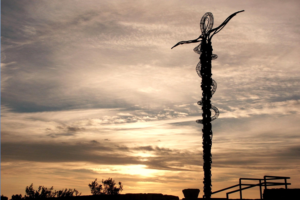
The (Dead Sea + Madaba + Mount Nebo Full-Day) Tour From Amman escorted with English speaking driver (From One to Three Persons in a Modern Sedan Vehicle. Four to seven using H1 Minivan ). Pick and drop off to / and from your hotel, early morning at 09:00 am and returns back to Amman around 18:00.
08:00 AM Home / Hotel Pick up.
09:00 AM Reach Madaba.
Visit St George’s Church & Mosaic Map.
Visit St. John the Baptist Roman Catholic Church.
Madaba Mosaic Shops & Mount Nebo tour.
Visit Dead Sea Private Beach.
17:00 Drive Back to Amman.
18:00 Reach Amman, your Hotel Drop off.
Inclusions
English Speaking driver.
Modern private Car with AC including gas (Sedan for 3 Persons – H1 Van for 4-7 Persons).
Hotel Pick-up and drop-off.
Dead Sea Entry Fees and lunch included.
Exclusions
Madaba & Mount Nebo Entrance Fee Not included.
The Day Tour Just for the Dead Sea Madaba and Mount Nebo Any other sites Not included.
you can show your Jordan Pass at the Main Entrance
( Madaba – Mount Nebo )
or you can buy the Ticket from The Main Entrance.
Driver (around 10% Total Charges) Tips Recommended.
Bring towels and beach shoes.
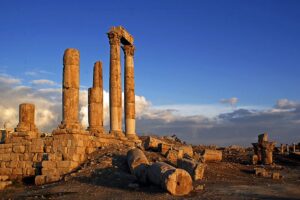
The (Dead Sea + Amman City Tour Full-Day) Tour From Amman escorted with English speaking driver (From One to Three Persons in a Modern Sedan Vehicle. Four to seven using H1 Minivan ). Pick and drop off to / and from your hotel, early morning at 09:00 am and returns back to Amman around 18:00.
09:00 AM Home / Hotel Pick up.
09:30 Visiting Amman Citadel
10:00 Visiting of Roman theatre & the museum
11:30 Downtown Tour – visiting Al-Husseini Mosque and old markets
Visit Dead Sea Private Beach.
17:00 Drive Back to Amman.
18:00 Reach Amman, your Hotel Drop off.
Inclusions
English Speaking driver.
Modern private Car with AC including gas (Sedan for 3 Persons – H1 Van for 4-7 Persons).
Hotel Pick-up and drop-off.
Dead Sea Entry Fees and lunch included.
Exclusions
Citadel, Roman theatre, the museum, Al-Husseini Mosque Entrance Fee not included.
you can show your Jordan Pass at the Main Entrance
Citadel, Roman theatre, the museum, Al-Husseini Mosque
or you can buy the Ticket from The Main Entrance.
Driver (around 10% Total Charges) Tips Recommended.
Bring towels and beach shoes.
Dead Sea Tour,Dead Sea Tour,Dead Sea Tour,Dead Sea Tour,Dead Sea Tour,Dead Sea Tour,Dead Sea Tour,Dead Sea Tour
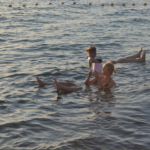
The (Dead Sea + Mujib Reserve) Full-Day Tour From Amman escorted with English speaking driver (From One to Three Persons in a Modern Sedan Vehicle. Four to seven using H1 Minivan ). Pick and drop off to / and from your hotel, early morning at 09:00 am and returns back to Amman around 18:00.
09:00 AM Home / Hotel Pick up.
10:30 AM Reach Mujib Reserve.
13:30 Drive to Dead Sea Private Beach.
14:00 Reach Dead sea Private Beach.
Enjoy The Beach – Floating & Swimming in the Dead Sea, Eat Lunch.
17:00 Drive Back to Amman.
18:00 Reach Amman, your Hotel Drop off.
Inclusions
English Speaking driver.
Modern private Car with AC including gas (Sedan for 3 Persons – H1 Van for 4-7 Persons).
Hotel Pick-up and drop-off.
Dead Sea Entry Fees and lunch included.
Mujib Reserve Entrance Fee Included.
Exclusions
The Day Tour Just for the Dead Sea and Mujib Reserve Any other sites Not included.
Driver (around 10% Total Charges) Tips Recommended.
Bring towels and beach shoes.
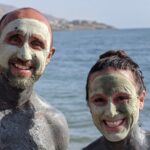
The (Dead Sea + Ma’in Hot Spring) Full-Day Tour From Amman escorted with English speaking driver (From One to Three Persons in a Modern Sedan Vehicle. Four to seven using H1 Minivan ). Pick and drop off to / and from your hotel, early morning at 09:00 am and returns back to Amman around 18:00.
09:00 AM Home / Hotel Pick up.
10:30 AM Reach Ma’in Hot Spring.
13:00 Drive to Dead Sea Private Beach.
13:30 Reach Dead sea Private Beach.
Enjoy The Beach – Floating & Swimming in the Dead Sea, Eat Lunch.
17:00 Drive Back to Amman.
18:00 Reach Amman, your Hotel Drop off.
Inclusions
English Speaking driver.
Modern private Car with AC including gas (Sedan for 3 Persons – H1 Van for 4-7 Persons).
Hotel Pick-up and drop-off.
Dead Sea Entry Fees and lunch included.
Ma’in Hot Spring Entrance Fee Included.
Exclusions
The Day Tour Just for the Dead Sea and Ma’in Hot Spring Any other sites Not included.
Driver (around 10% Total Charges) Tips Recommended.
Bring towels and beach shoes.
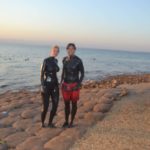
The (Dead Sea + Baptism site) Full-Day Tour From Amman escorted with English speaking driver (From One to Three Persons in a Modern Sedan Vehicle. Four to seven using H1 Minivan ). Pick and drop off to / and from your hotel, early morning at 09:00 am and returns back to Amman around 18:00.
09:00 AM Home / Hotel Pick up.
10:00 AM Reach Baptism site.
13:00 Drive to Dead Sea Private Beach.
13:30 Reach Dead sea Private Beach.
Enjoy The Beach – Floating & Swimming in the Dead Sea, Eat Lunch.
17:00 Drive Back to Amman.
18:00 Reach Amman, your Hotel Drop off.
Inclusions
English Speaking driver.
Modern private Car with AC including gas (Sedan for 3 Persons – H1 Van for 4-7 Persons).
Hotel Pick-up and drop-off.
Dead Sea Entry Fees and lunch included.
Baptism site Entrance Fee Included.
Exclusions
The Day Tour Just for the Dead Sea and Baptism site Any other sites Not included.
if you have a Jordan pass and your Jordan pass include a baptism site, the entrance fee will be deducted from your Payment.
Driver (around 10% Total Charges) Tips Recommended.
Bring towels and beach shoes.
Dead Sea Tour,Dead Sea Tour,Dead Sea Tour,Dead Sea Tour,Dead Sea Tour,Dead Sea Tour,Dead Sea Tour,Dead Sea Tour
We offer Dead Sea Day Tour with Different Options.
we recommend you Add Madaba. & Mount Nebo
Start at 8:00 AM will help more to visit all these sites,
and spend enough time in dead sea.
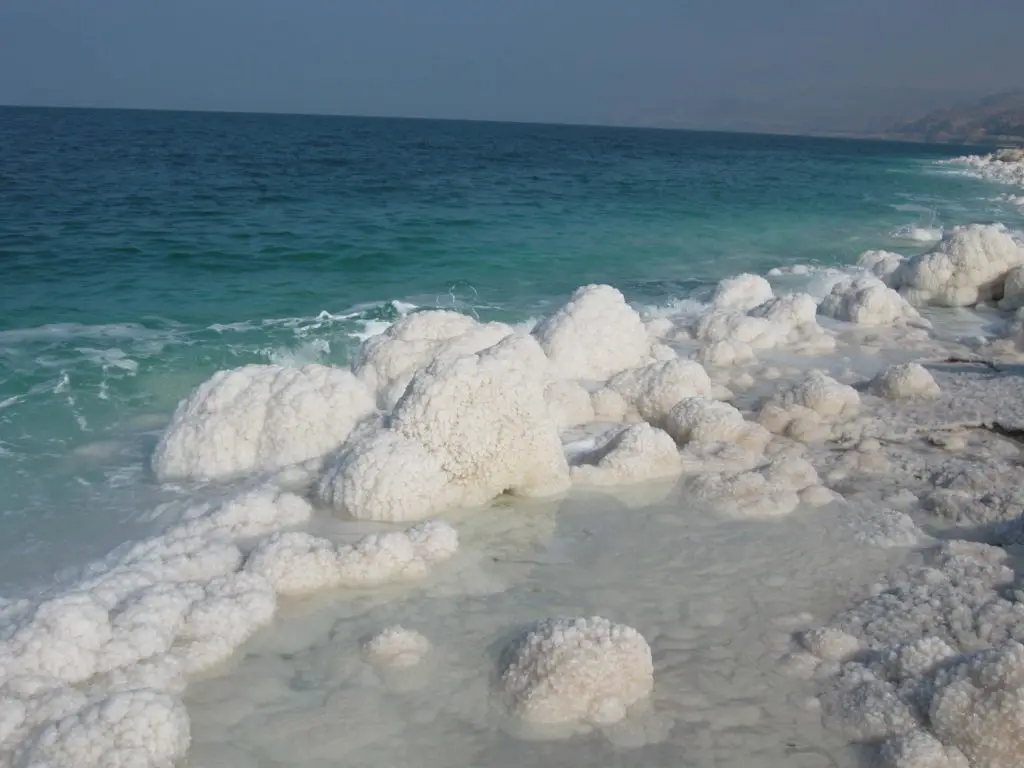
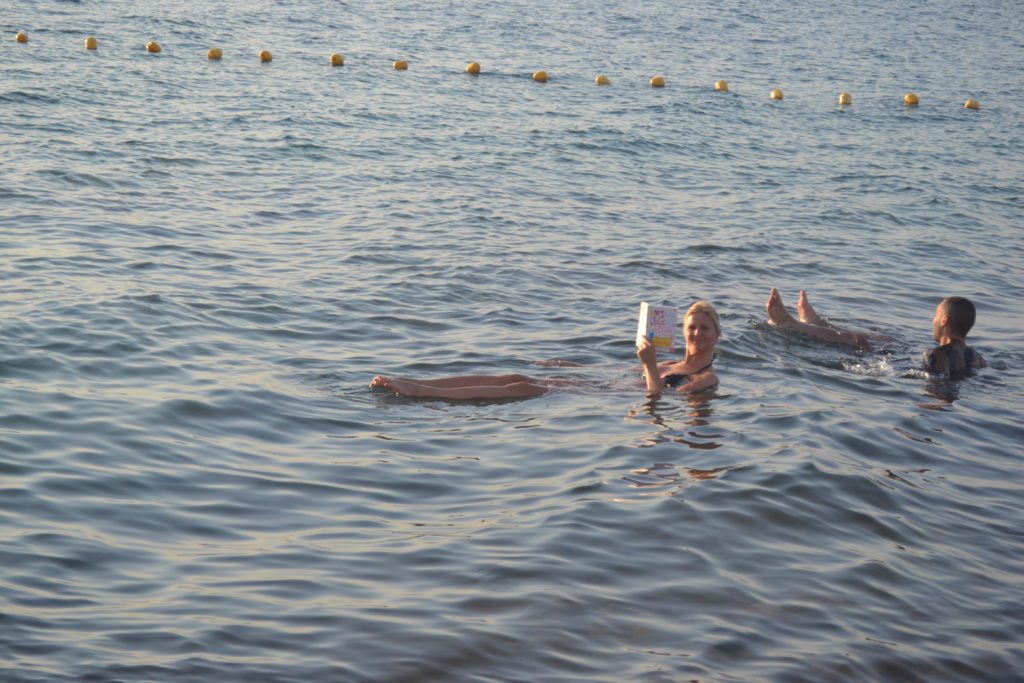
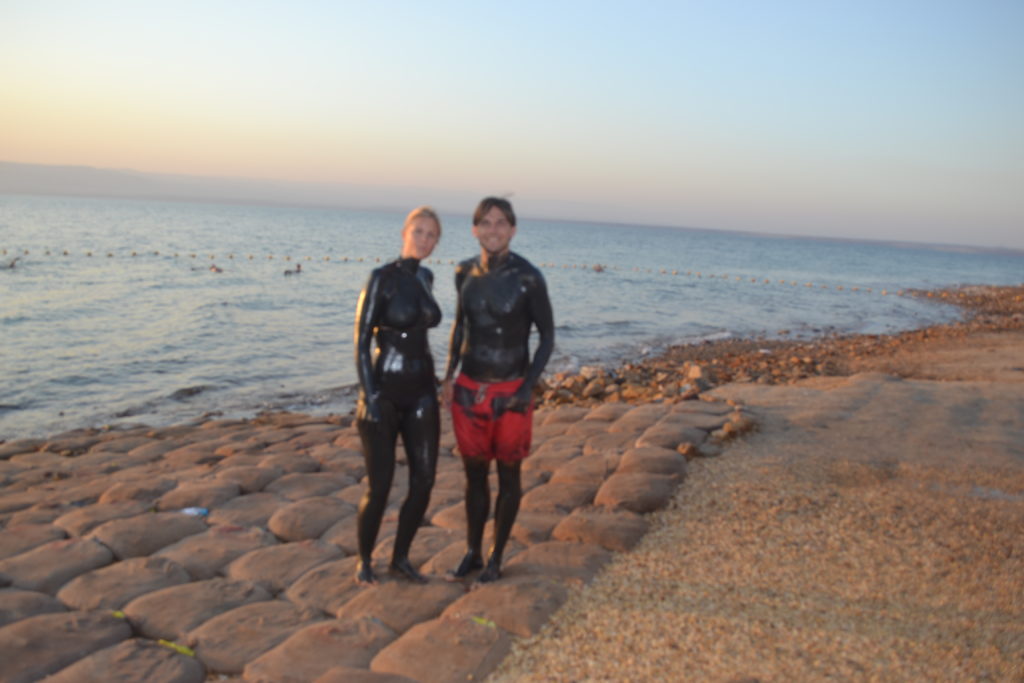
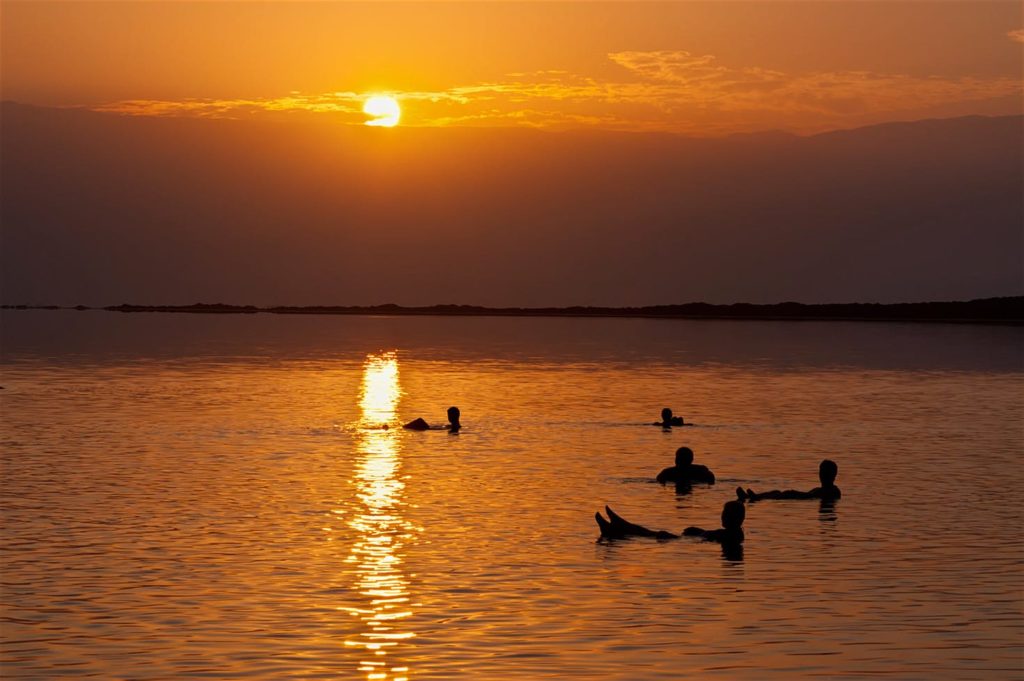
The Dead Sea is a salt lake bordered by Jordan to the east and Israel and the West Bank to the west.
It lies in the Jordan Rift Valley, and its main tributary is the Jordan River.
The lake’s surface is 430.5 metres (1,412 ft) below sea level,
making its shores the lowest land-based elevation on Earth.
It is 304 m (997 ft) deep, the deepest hypersaline lake in the world.
With a salinity of 342 g/kg, or 34.2% (in 2011),
it is one of the world’s saltiest bodies of water – 9.6 times as salty as the ocean –
and has a density of 1.24 kg/litre, which makes swimming similar to floating.
This salinity makes for a harsh environment in which plants and animals cannot flourish,
hence its name.
The Dead Sea’s main, northern basin is 50 kilometres (31 mi) long and 15 kilometres
(9 mi) wide at its widest point.
The Dead Sea has attracted visitors from around the Mediterranean Basin for thousands of years.
It was one of the world’s first health resorts (for Herod the Great),
and it has been the supplier of a wide variety of products,
from asphalt for Egyptian mummification to potash for fertilisers. Today,
tourists visit the sea on its Israeli, Jordanian and West Bank coastlines.
The Palestinian tourism industry has been met with setbacks
in developing along the West Bank coast.
The Dead Sea is receding at a swift rate; its surface area today is 605 km2 (234 sq mi),
having been 1,050 km2 (410 sq mi) in 1930.
The recession of the Dead Sea has begun causing problems,
and multiple canals and pipeline proposals have been made to reduce its recession.
One of these proposals is the Red Sea-Dead Sea Water Conveyance pipeline project,
which would provide water to neighbouring countries
and carry brine to the Dead Sea to help stabilise its water level
From To Time (Hour) Amman Dead Sea 1 Madaba Dead Sea 45 min Wadi Rum Dead Sea 4 hours Petra Dead Sea 3 hours Aqaba Dead Sea 4 hours Queen Alia Inter National Airport Dead Sea 1 hours Jerash Dead Sea 1:30 hours
There are many hotels in the Dead Sea where you can spend your night.
Kindly find below the list of dead sea Hotels:
| Hotel Name | Star | Land Line | Book By Tripadvisor | Book By Booking | Book By Agoda |
| kempinski Dead Sea Ishtar | 5 | +962 5 356 8888 | Request | Request | Request |
| Mövenpick Resort & Spa Dead Sea | 5 | +962 5 356 11 11 | Request | Request | Request |
| Dead Sea Marriott Resort & Spa | 5 | +962 5 356 0400 | Request | Request | Request |
| Hilton Dead Sea Resort & Spa | 5 | +962 5 349 3000 | Request | Request | Request |
| Holiday Inn Resort Dead Sea | 5 | +962 5 3495555 | Request | Request | Request |
| Crowne Plaza Dead Sea Resort & Spa | 5 | +962 5 3494000 | Request | Request | Request |
| Ramada Resort Dead Sea | 4 | +962 5 349 5000 | Request | Request | Request |
| Dead Sea Spa Hotel | 4 | +962 5 365 1000 | Request | Request | Request |
| Mujib Chalets | 3 | +962 6 4616523 | Request | Request | Request |
The Dead Sea is an endorheic lake located in the Jordan Rift Valley, a geographic feature formed by the Dead Sea Transform (DST). This left lateral-moving transform fault lies along the tectonic plate boundary between the African Plate and the Arabian Plate. It runs between the East Anatolian Fault zone in Turkey and the northern end of the Red Sea Rift offshore of the southern tip of Sinai. It is here that the Upper Jordan River/Sea of Galilee/Lower Jordan River water system comes to an end.
The Jordan River is the only major water source flowing into the Dead Sea, although there are small perennial springs under and around the Dead Sea, forming pools and quicksand pits along the edges.
There are no outlet streams.
The Mujib River, biblical Arnon, is one of the larger water sources of the Dead Sea other than the Jordan.
The Wadi Mujib valley, 420 m below the sea level in the southern part of the Jordan valley, is a biosphere reserve, with an area of 212 km2 (82 sq mi).
Other more substantial sources are Wadi Darajeh (Arabic)/Nahal Dragot (Hebrew), and Nahal Arugot that ends at Ein Gedi (German article at de: Nachal Arugot).
Wadi Hasa (biblical Zered) is another wadi flowing into the Dead Sea.
Rainfall is scarcely 100 mm (4 in) per year in the northern part of the Dead Sea and barely 50 mm (2 in) in the southern part.[18] The Dead Sea zone’s aridity is due to the rainshadow effect of the Judaean Mountains. The highlands east of the Dead Sea receive more rainfall than the Dead Sea itself.
To the west of the Dead Sea, the Judaean mountains rise less steeply and are much lower than the mountains to the east. Along the southwestern side of the lake is a 210 m (700 ft) tall halite mineral formation called Mount Sodom.
There are two contending hypotheses about the origin of the low elevation of the Dead Sea. The older hypothesis is that the Dead Sea lies in a true rift zone, an extension of the Red Sea Rift, or even of the Great Rift Valley of eastern Africa. A more recent hypothesis is that the Dead Sea basin is a consequence of a “step-over” discontinuity along the Dead Sea Transform, creating an extension of the crust with consequent subsidence.
During the late Pliocene-early Pleistocene,
around 3.7 million years ago, what is now the valley of the Jordan River, Dead Sea, and the northern Wadi Arabah was repeatedly inundated by waters from the Mediterranean Sea.
The waters formed in a narrow, crooked bay that is called by geologists the Sedom Lagoon, which was connected to the sea through what is now the Jezreel Valley.
The floods of the valley came and went depending on long-scale changes in the tectonic and climatic conditions.
The Sedom Lagoon extended at its maximum from the Sea of Galilee in the north to somewhere around 50 km (30 mi) south of the current southern end of the Dead Sea, and the subsequent lakes never surpassed this expanse. The Hula Depression was never part of any of these water bodies due to its higher elevation and the high threshold of the Korazim block separating it from the Sea of Galilee basin
The Sedom Lagoon deposited evaporites mainly consisting of rock salt, which eventually reached a thickness of 2.3 km (1.43 mi) on the old basin floor in the area of today’s Mount Sedom.
Approximately two million years ago, the land between the Rift Valley and the Mediterranean Sea rose to such an extent that the ocean could no longer flood the area. Thus, the long lagoon became a landlocked lake.
The first prehistoric lake to follow the Sedom Lagoon is named Lake Amora (which possibly appeared in the early Pleistocene; its sediments developed into the Amora (Samra) Formation, dated to over 200-80 kyr BP), followed by Lake Lisan (c. 70-14 kyr) and finally by the Dead Sea.
The water levels and salinity of the successive lakes (Amora, Lisan, Dead Sea) have either risen or fallen as an effect of the tectonic dropping of the valley bottom, and due to climate variation. As the climate became more arid, Lake Lisan finally shrank and became saltier, leaving the Dead Sea as its last remainder.
From 70,000 to 12,000 years ago, Lake Lisan’s level was 100 m (330 ft) to 250 m (820 ft) higher than its current level. Its level fluctuated dramatically, rising to its highest level around 26,000 years ago, indicating a very wet climate in the Near East.
Around 10,000 years ago, the lake’s level dropped dramatically, probably even lower than today. During the last several thousand years, the lake has fluctuated approximately 400 m (1,300 ft), with some significant drops and rises. Current theories as to the cause of this dramatic drop in levels rule out the volcanic activity; therefore, it may have been a seismic event.
In prehistoric times, great amounts of sediment were collected on the floor of Lake Amora.
The sediment was heavier than the salt deposits and squeezed the salt deposits upwards into what is now the Lisan Peninsula and Mount Sodom (on the southwest side of the lake). Geologists explain the effect in terms of a bucket of mud into which a large flat stone is placed, forcing the mud to creep up the sides of the bucket. When the floor of the Dead Sea dropped further due to tectonic forces, the salt mounts of Lisan and Mount Sodom stayed in place as high cliffs.
The Dead Sea has a hot desert climate (Köppen climate classification BWh), with year-round sunny skies and dry air. It has less than 50 millimetres (2 in) mean annual rainfall and a summer average temperature between 32 and 39 °C (90 and 102 °F). Winter average temperatures range between 20 and 23 °C (68 and 73 °F). The region has weaker ultraviolet radiation, particularly the UVB (erythrogenic rays). Given the higher atmospheric pressure, the air has a slightly higher oxygen content (3.3% in summer to 4.8% in winter) as compared to oxygen concentration at sea level.
Barometric pressures at the Dead Sea were measured between 1061 and 1065 hPa and clinically compared with health effects at higher altitudes.
(This barometric measure is about 5% higher than sea level standard atmospheric pressure of 1013.25 hPa, which is the global ocean mean or ATM.) The Dead Sea affects temperatures nearby because of the moderating effect a large body of water has on climate. During the winter, sea temperatures tend to be higher than land temperatures, and vice versa during the summer months. This is the result of the water’s mass and specific heat capacity. On average, there are 192 days above 30 °C (86 °F) annually.
With 34.2% salinity (in 2011), it is one of the world’s saltiest bodies of water, though Lake Vanda in Antarctica (35%), Lake Assal in Djibouti (34.8%), Lagoon Garabogazköl in the Caspian Sea (up to 35%) and some hypersaline ponds and lakes of the McMurdo Dry Valleys in Antarctica (such as Don Juan Pond (44%)) have reported higher salinities.
In the 19th century and the early 20th century, the surface layers of the Dead Sea were less salty than today, which resulted in an average density in the range of 1.15-1.17 g/cm3 instead of the present value of around 1.25 g/cm3. A sample tested by Bernays in the 19th century had a salinity of 19%. By the year 1926, the salinity had increased(although it was also suspected that the salinity varies seasonally and depends on the distance from the mouth of the Jordan).
Until the winter of 1978–79, when a major mixing event took place,
the Dead Sea was composed of two stratified layers of water that differed in temperature, density, age, and salinity. The topmost 35 meters (115 ft) or so of the Dead Sea had an average salinity of about 30% and a temperature that swung between 19 °C (66 °F) and 37 °C (99 °F). Underneath a zone of transition, the lowest level of the Dead Sea had waters of a consistent 22 °C (72 °F) temperature, a salinity of over 34%, and complete saturation of sodium chloride (NaCl).[31] Since the water near the bottom is saturated with NaCl, that salt precipitates out of solution onto the seafloor.
Beginning in the 1960s, water inflow to the Dead Sea from the Jordan River was reduced as a result of large-scale irrigation and generally low rainfall. By 1975, the upper water layer was saltier than the lower layer. Nevertheless, the upper layer remained suspended above the lower layer because its waters were warmer and thus less dense. When the upper layer cooled so its density was greater than the lower layer, the waters mixed (1978–79). For the first time in centuries, the lake was a homogeneous body of water. Since then, stratification has begun to redevelop.
The mineral content of the Dead Sea is very different from that of ocean water. The exact composition of the Dead Sea water varies mainly with the season, depth and temperature. In the early 1980s, the concentration of ionic species (in g/kg) of Dead Sea surface water was Cl− (181.4), Br− (4.2), SO42− (0.4), HCO3− (0.2), Ca2+ (14.1), Na+ (32.5), K+ (6.2) and Mg2+ (35.2). The total salinity was 276 g/kg.
These results show that the composition of the salt, as anhydrous chlorides on a weight percentage basis, was calcium chloride (CaCl2) 14.4%, potassium chloride (KCl) 4.4%, magnesium chloride (MgCl2) 50.8% and sodium chloride (NaCl) 30.4%. In comparison, the salt in the water of most oceans and seas is approximately 85% sodium chloride. The concentration of sulfate ions (SO42−) is very low, and the concentration of bromide ions (Br−) is the highest of all waters on Earth.
The salt concentration of the Dead Sea fluctuates around 31.5%. This is unusually high and results in a nominal density of 1.24 kg/l. Anyone can easily float in the Dead Sea because of natural buoyancy. In this respect, the Dead Sea is similar to the Great Salt Lake in Utah in the United States.
An unusual feature of the Dead Sea is its discharge of asphalt. From deep seeps, the Dead Sea constantly spits up small pebbles and blocks of the black substance.
Asphalt-coated figurines and bitumen-coated Neolithic skulls from archaeological sites have been found. Egyptian mummification processes used asphalt imported from the Dead Sea region.
The sea is called “dead” because its high salinity prevents macroscopic aquatic organisms, such as fish and aquatic plants, from living in it, though minuscule quantities of bacteria and microbial fungi are present.
In times of flood, the salt content of the Dead Sea can drop from its usual 35% to 30% or lower. The Dead Sea temporarily comes to life in the wake of rainy winters. In 1980, after one such rainy winter, the normally dark blue Dead Sea turned red. Researchers from the Hebrew University of Jerusalem found the Dead Sea to be teeming with an alga called Dunaliella. Dunaliella in turn nourished carotenoid-containing (red-pigmented) halobacteria, whose presence caused the colour change. Since 1980, the Dead Sea basin has been dry and the algae and the bacteria have not returned in measurable numbers.
In 2011 a group of scientists from Beer Sheva, Israel and Germany discovered fissures in the floor of the Dead Sea by scuba diving and observing the surface. These fissures allow fresh and brackish water to enter the Dead Sea. They sampled biofilms surrounding the fissures and discovered numerous species of bacteria and archaea.
Many animal species live in the mountains surrounding the Dead Sea. Hikers can see ibex, hares, hyraxes, jackals, foxes, and even leopards. Hundreds of bird species inhabit the zone as well. Both Jordan and Israel have established nature reserves around the Dead Sea.
The delta of the Jordan River was formerly a jungle of papyrus and palm trees. The Jewish historian Flavius Josephus described Jericho as “the most fertile spot in Judea”. In Roman and Byzantine times, sugarcane,[dubious – discuss] henna, and sycamore-fig all made the lower Jordan valley wealthy. One of the most valuable products produced by Jericho was the sap of the balsam tree, which could be made into perfume. By the 19th century, Jericho’s fertility had disappeared.
There are several small communities near the Dead Sea. These include Ein Gedi, Neve Zohar and the Israeli settlements in the Megillot Regional Council: Kalya, Mitzpe Shalem and Avant. There is a nature preserve at Ein Gedi, and several Dead Sea hotels are located on the southwest end at Ein Bokek near Neve Zohar. Highway 90 runs north-south on the Israeli side for a total distance of 565 km (351 mi) from Metula on the Lebanese border in the north to its southern terminus at the Egyptian border near the Red Sea port of Eilat.
Potash City is a small community on the Jordanian side of the Dead Sea and others including Suleiman. Highway 65 runs north-south on the Jordanian side from near Jordan’s northern tip down past the Dead Sea to the port of Aqaba.
Dwelling in caves near the Dead Sea is recorded in the Hebrew Bible as having taken place before the Israelites came to Canaan, and extensively at the time of King David.
Just northwest of the Dead Sea is Jericho. Somewhere, perhaps on the southeastern shore, would be the cities mentioned in the Book of Genesis which were said to have been destroyed in the time of Abraham: Sodom and Gomorra (Genesis 18) and the three other “Cities of the Plain”, Admah, Zeboim and Zoar (Deuteronomy 29:23). Zoar escaped destruction when Abraham’s nephew Lot escaped to Zoar from Sodom (Genesis 19:21–22). Before the destruction, the Dead Sea was a valley full of natural tar pits, which was called the vale of Siddim. King David was said to have hidden from Saul at Ein Gedi nearby.
In Ezekiel 47:8–9, there is a specific prophecy that the sea will “be healed and made fresh”, becoming a normal lake capable of supporting marine life. A similar prophecy is stated in Zechariah 14:8, which says that “living waters will go out from Jerusalem, half of them to the eastern sea [likely the Dead Sea] and half to the western sea [the Mediterranean].”
Aristotle wrote about the remarkable waters. The Nabateans and others discovered the value of the globs of natural asphalt that constantly floated to the surface where they could be harvested with nets. The Egyptians were steady customers, as they used asphalt in the embalming process that created mummies. The Ancient Romans knew the Dead Sea as “Palus Asphaltites”(Asphalt Lake).
The Dead Sea was an important trade route with ships carrying salt, asphalt and agricultural produce. Multiple anchorages existed on both sides of the sea, including in Ein Gedi, Khirbet Mazin (where the ruins of a Hasmonean-era dry dock are located), Numeira and near Masada.
King Herod the Great built or rebuilt several fortresses and palaces on the western bank of the Dead Sea. The most famous was Masada, wherein 70 CE a small group of Jewish zealots fled after the fall of the destruction of the Second Temple. The zealots survived until 73 CE when a siege by the X Legion ended in the deaths by suicide of its 960 inhabitants. Another historically important fortress was Machaerus (מכוור), on the eastern bank, where, according to Josephus, John the Baptist was imprisoned by Herod Antipas and died.
Also in Roman times, some Essenes settled on the Dead Sea’s western shore; Pliny the Elder identifies their location with the words, “on the west side of the Dead Sea, away from the coast … the town of Engeda” (Natural History, Bk 5.73); and it is, therefore, a hugely popular but contested hypothesis today, that same Essenes are identical with the settlers at Qumran and that “the Dead Sea Scrolls” discovered during the 20th century in the nearby caves had been their own library.
Josephus identified the Dead Sea in geographic proximity to the ancient Biblical city of Sodom. However, he referred to the lake by its Greek name, Asphaltites.
Various sects of Jews settled in caves overlooking the Dead Sea. The best known of these are the Essenes of Qumran, who left an extensive library known as the Dead Sea Scrolls.
The town of Ein Gedi, mentioned many times in the Mishna, produced persimmon for the temple’s fragrance and for export, using a secret recipe. “Sodomite salt” was an essential mineral for the temple’s holy incense, but was said to be dangerous for home use and could cause blindness.
The Roman camps surrounding Masada were built by Jewish slaves receiving water from the towns around the lake. These towns had drinking water from the Ein Feshcha springs and other sweetwater springs in the vicinity.
Intimately connected with the Judean wilderness to its northwest and west, the Dead Sea was a place of escape and refuge. The remoteness of the region has attracted Greek Orthodox monks since the Byzantine era. Their monasteries, such as Saint George in Wadi Kelt and Mar Saba in the Judaean Desert, are places of pilgrimage.
In the 19th century, the River Jordan and the Dead Sea were explored by boat primarily by Christopher Costigan in 1835, Thomas Howard Molyneux in 1847, William Francis Lynch in 1848, and John MacGregor in 1869.
The full text of W. F. Lynch’s 1949 book Narrative of the United States’ Expedition to the River Jordan and the Dead Sea is available online. Charles Leonard Irby and James Mangles travelled along the shores of the Dead Sea already in 1817–18 but didn’t navigate on its waters.
World’s lowest (dry) point, Jordan, 1971
Explorers and scientists arrived in the area to analyze the minerals and research the unique climate.
After the find of the “Moabite Stone” in 1868 on the plateau east of the Dead Sea, Moses Wilhelm Shapira and his partner Salim al-Khouri forged and sold a whole range of presumed “Moabite” antiquities, and in 1883 Shapira presented what is now known as the “Shapira Strips”, a supposedly ancient scroll written on leather strips which he claimed had been found near the Dead Sea. The strips were declared to be forgeries and Shapira took his own life in disgrace.
In the late 1940s and early 1950s, hundreds of religious documents dated between 150 BCE and 70 CE were found in caves near the ancient settlement of Qumran, about one mile (1.6 kilometres) inland from the northwestern shore of the Dead Sea (presently in the West Bank). They became known and famous as the Dead Sea Scrolls.
The world’s lowest road, Highway 90, run along the Israeli and West Bank shores of the Dead Sea, along with Highway 65 on the Jordanian side, at 393 m (1,289 ft) below sea level.
The Dead Sea is one of the most dramatic places on earth, with its stunning natural environment equally matched by its powerful spiritual symbolism. The infamous Sodom and Gomorrah and other cities of the Dead Sea plain, or (Cities of the Valley) were the subjects of some of the most dramatic and enduring Old Testament stories, including that of Lot, whose wife was turned into a pillar of salt for disobeying God’s will. Lot and his two daughters survived and fled to a cave near the small town of Zoar (modern-day Safi). The Bible says Lot’s daughters gave birth to sons whose descendants would become the Ammonite and Moabite people, whose kingdoms were in what is now central Jordan. Although not confirmed, the sites of the cities of Sodom and Gomorrah are believed to be the remains of the ancient walled towns of Bab ed-Dhra’ and Numeira, in the southeastern Dead Sea central plain. On a hillside above the town of Zoar (modern-day Safi), Byzantine Christians built a church and monastery dedicated to Saint Lot. The complex was built around the cave where Lot and his daughters found refuge.
The people of Lot lived in a society very similar to our own. It was corrupt, the people had no shame, criminals and criminal activity abounded, and those passing through the town of Sodom risked robbery and physical abuse. The overall atmosphere of the town was not one of a cohesive society. The people of Lot were without morals, without standards and without shame. The homosexuality that abounded did not exist in a vacuum, it was part of a lifestyle that not only allowed but also encouraged vice and corruption. It was to this town that God sent Prophet Lot; his message was to worship God alone. However, embedded in worship are the desire and the willingness to obey God’s commandments? The people of Sodom were content with their corrupt ways and had no desire to curb them. Lot became an annoyance and his words were ignored.
Prophet Lot called the people to give up their criminal activities and indecent behaviour but they refused to listen. Lot confronted his people and admonished them. He pointed out their corruption, their criminal activities and their unnatural sexual behaviour.
Prophet Lot continued to suffer due to the wicked ways and unnatural behaviour of the people around him, yet he patiently continued to deliver his message. He called the people to give up their wicked ways and obey the One God, worshipping Him alone. However, the townspeople continued to mock and belittle Lot and even taunted him by challenging him to bring God’s torment upon them.